Tracking Articles on S&R Tracks
Ed's Note: Gary Murray is a friend of mine. He is a retired Royal Canadian Mounted Police (RCMP) dog handler with 17 years of experience running tracking dogs for the RCMP. He currently owns and operates a kennel and training facility in Alberta. He sponsors tracking seminars for police and S.A.R. at his facility several times per year. If you are a K-9 handler or S.A.R. volunteer, I highly recommend Gary's seminars. You will come away from his seminars a better dog handler and trainer. —Ed Frawley
Why do we train for articles on tracks? Competition handlers train for articles because it is a required portion of a tracking evaluation. Working handlers train for articles for two reasons. One, most working dog standards require it and two, a dog has to be able to locate scent related evidence on a track.
Lets break this discussion on track articles down into a number of parts and cover them one by one.
When do we teach articles on tracks? Training articles on a track is a prelude to teaching the dog to do free article searching. It is important to note that if you plan to teach your dog to track and also to teach the dog free search (for anything i.e.: missing persons, articles, drugs, explosives), the tracking aspect should be taught and be soundly in place before you introduce the free search. The reason for this is if you introduce free searching before or too soon this activity will teach the dog to keep his/her head high to search the air currents and may hamper the dog from becoming a nose down tracker.
The article part of the tracking lessons should start after the initial idea of tracking is set in the dogs mind. What I mean by this is when the dog has the first part of tracking down and you feel the dog understands just what he/she is supposed to do. This would be somewhere after the dog has learned to corner and you are starting to put some distance into the tracks.
I prefer to give the dog the optimum opportunity to learn so I would put the article in the middle of a straight leg of a track that I know the dog can manage as far as distance and age goes. The article would be cloth, quite large, placed right on the track and heavily scented with the track layers scent.
This is an area where sport trackers and some working people will disagree with what I am about to say. But disagreement leads to discussion which leads to ideas which may lead to improvement which is what we are all after for our dogs so disagree if you like.
As I am more concerned with working dogs here is how I would handle the teaching of the article. As the dog indicates the article which is read through the dogs body language I would give the dog lots of praise. Work my way quickly up the line to the dog and the article and if the dog is so inclined start a game of tug-a-war with the article. Praising all during this. Doing this for a time period just long enough so you are sure that the dog understands the value of the article and the praise. Then command the dog to "out" and re-command the dog to track "Soo" and continue tracking.
There might be a slight problem with getting the dog to get back to tracking. But if the initial tracking experience is in place and as long as you remain calm and direct the dog to track properly this should not be a problem. The leg after the article should be just long enough to get the dog back tracking, his mind on tracking and then bang the end of the track and the quarry.
This initial training stage you will want to know where the articles are on the track so you can help the dog learn this part of training. Once this area is know by both the dog and the handler you should switch to articles at unknown locations so you can learn how to read the dog as to article location.
Those of you who have to teach the dog to down or sit at the article I would leave this teaching of articles until the tracking is well in place. The reason for this is the act of having to "down" or "sit" if it is enforced may distract the dog from tracking in a negative way and he/she may associate this to the actual tracking. This could bring your progress in tracking to a grinding halt. If you have to teach the "down" or "sit" at an article teach this part last or even teach it as a separate exercise and then introduce it to the track.
By this I mean while the dog is on leash you work him/her in an area where you have thrown out some articles. When the dog naturally comes upon these articles each time they do have them "down" or "sit" then praise and or food reward. Once the dog is doing this on it's own, try an article on the track.
As the tracking training progresses so does the article training. As the tracks get longer you introduce more articles. As the dogs indications on the articles improve you start to reduce the size of the articles. Once the dog is solid in his/her indications you start to introduce different articles (i.e.:wood, plastic, metal, guns, knives, etc.)
As I teach most of my dogs to "Track Through Drive" this article training helps in teaching the dog to track. They are used as a motivator and a bit of a reward after a tough stretch of a track. It also serves as an indicator to the dog team that they are on the right track as almost all of our tracks are unknown to the handler, (the only way to learn).
The transition from articles on a track to free searching is very little. All the basics have been taught on the track. The idea of indicating an article with human scent on it is already set firmly in the dogs mind. All you have to do is place scented articles of a larger size to start out in a field, command the dog to "search lost" and work the dog in a zigzag pattern into the wind. It will all fall into place quickly and you will not have lost the dogs ability to distinguish between tracking (Nose down) and searching (Nose up). As the dog progresses the articles get smaller and different articles are introduced. Before you know it you have yourself a working dog!
Some of the conditions you should be aware of that might hinder the training process should be mentioned.
When introducing articles on a track make sure the track is laid down wind. That way the dog has to track right up to the article and does not wind it and lift his head away from tracking to race to the article. This will prevent a bad habit from developing.
Articles should all be well scented during the initial part of training and this can last for a fairly long period of time. Remember you are trying to teach a new dog to indicate a scent related article. Nothing is worse than seeing a quarry step out of the truck pick up articles that aren't his and are not properly scented to go and lay a track. Give the dog a break and provide the optimum training experience. Do it right or don't do it at all. All articles once used should be sterilized or thrown out.
The decision to have a passive indication on articles (Down, or Sit), or an aggressive indication (mouthing, or picking up) may not be up to you. If you are training a competition dog or your working dog standards dictate just what you do, you will be forced to comply or loose the marks. My opinion is based only on working dogs. I do not feel that it matters how the dog indicates the article only that the dog indicates the article. This has to be in a way that the handler can read the dog and retrieve the article. The training of the dog is easier and more fun for the dog if it is done with an aggressive indication. With this in mind the article becomes a reward and pleasurable to the dog and can be used to motivate the dog in his tracking. A happy dog will work longer and harder for you.
The other side of the coin for a dog that indicates articles aggressively is that people say the dog will destroy evidence. My argument for that is I would rather have a dog that works hard and finds the article on the track than one who misses the article. Secondly in a real situation you should be able to read your dog and call him/her off the article before it is damaged. Thirdly in real life most bad guys do not leave articles right on the track like a training or validation track is laid. They tend to throw evidence away so the article is not on the track at all.(A good dog handler always searches his/her tracks back for evidence!). Fourthly if you are training properly your training tracks will greatly out number your actual tracks therefore calling a dog off the article in a real situation will not have an adverse effect on the dogs training as he/she has lots of opportunity to aggress an article in training.
Article training is no different than any other aspect of dog training. You have to break it down into it's smallest component and teach each section, bring them all together to get your desired result. Bearing in mind to set up your training to allow the dog the optimum training exercise.




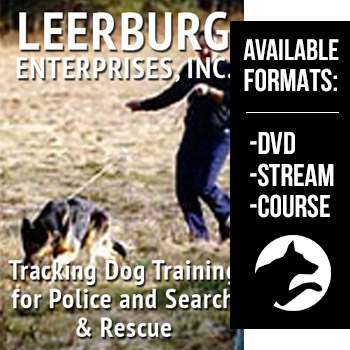
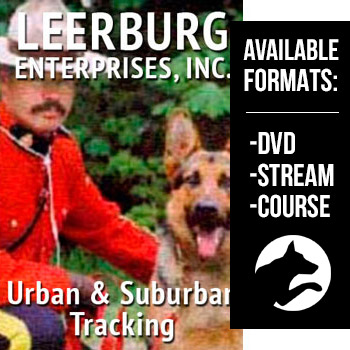
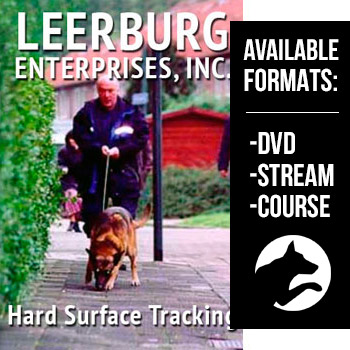
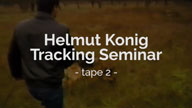
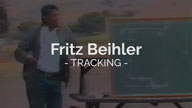
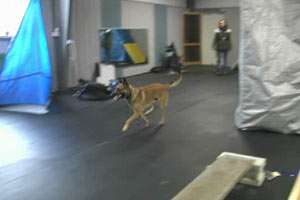
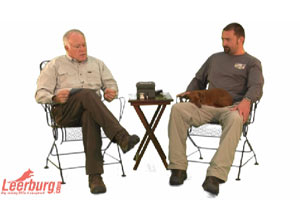
Ask Cindy.